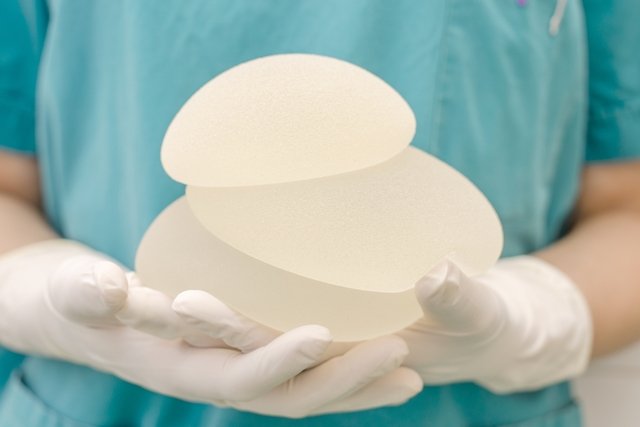Putting silicone on the buttocks is a very popular way to increase the size of the butt and improve the shape of the body contour.
This surgery is normally performed with epidural anesthesia and, therefore, the hospital stay can vary between 1 and 2 days, although a good part of the results can be seen soon after the surgery.

How is the surgery done
The surgery is performed under epidural anesthesia and sedation, and takes between 1h30 and 2 hours, and is performed with an incision between the sacrum and coccyx or in the gluteal fold. The surgeon must introduce the prosthesis through an opening between 5 and 7 cm, molding it as needed.
In general, the cut is then closed with internal stitches and a special plastic surgery bandage is used so that there is no scar left.
The doctor must place the modeling belt immediately after the surgery and it must remain in use for approximately 1 month, and must only be removed so that the individual can perform their physiological needs and bathe.
The individual must take painkillers for approximately 1 month to reduce pain. And about once a week you should perform 1 manual lymphatic drainage session to eliminate swelling and toxins.
Who can put silicone on the buttocks?
Practically all healthy people close to their ideal weight can undergo surgery to insert silicone into the buttocks.
Only obese or sick people should not undergo this type of surgery, as there is a greater risk of not achieving the desired result. Furthermore, people who have a very saggy buttocks should also opt for a buttock lift to obtain better results.
Care before and after surgery
Before placing silicone on the buttocks, it is necessary to carry out tests to check the individual’s health and make sure they are within their ideal weight.
After surgery, you must remain on your stomach for approximately 20 days, and depending on the individual’s work, they may be able to return to their usual activities within 1 week, but avoiding exertion. Physical activity can be restarted 4 months after surgery, slowly and gradually.
Possible risks of surgery
As with any surgery, placing silicone in the buttocks also presents some risks, such as:
- Hematomas;
- Hemorrhage;
- Capsular contracture of the prosthesis;
- Infection.
Performing the surgery in a hospital with a well-trained team reduces these risks and guarantees good results.
Anyone with a silicone prosthesis can travel by plane and dive to great depths, without the risk of the prosthesis breaking.
When you can see the results
The results of the surgery to place the silicone prosthesis in the buttocks are seen immediately after the surgery. But as the area may be very swollen, only after 15 days, when the swelling has reduced considerably, will the person be able to better observe the definitive results. The final result should only be visible approximately 2 months after placing the prosthesis.
In addition to silicone implants, there are other surgical options to increase the butt, such as fat grafting, a technique that uses the body’s own fat to fill, define and add volume to the buttocks.

Sign up for our newsletter and stay up to date with exclusive news
that can transform your routine!
Warning: Undefined array key "title" in /home/storelat/public_html/wp-content/plugins/link-whisper-premium/templates/frontend/related-posts.php on line 12
Warning: Undefined array key "title_tag" in /home/storelat/public_html/wp-content/plugins/link-whisper-premium/templates/frontend/related-posts.php on line 13



